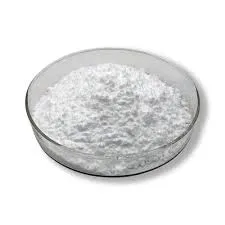
Sult . 06, 2024 18:37 Back to list
HPMC Excipients for Pharmaceuticals | High-Performance Solutions
The Role of HPMC Excipients in Pharmaceutical Formulations
Hydroxypropyl methylcellulose (HPMC) is a widely used excipient in the pharmaceutical industry. It is a semi-synthetic polymer derived from cellulose and has garnered significant attention due to its versatile applications in drug formulations. As a critical component for both oral and topical dosage forms, HPMC offers numerous benefits that enhance the efficacy and stability of pharmaceutical products.
The Role of HPMC Excipients in Pharmaceutical Formulations
In addition to its role in film formation, HPMC serves as a thickening agent in various formulations. It increases the viscosity of liquid formulations, such as suspensions and emulsions, which is crucial for achieving the desired stability and homogeneity. The viscosity properties of HPMC can be finely tuned by altering the degree of hydroxypropyl and methoxy substitution, allowing formulators to customize formulations for specific applications.
hpmc excipient

Moreover, HPMC is known for its excellent mucoadhesive properties, making it an ideal choice for drug delivery systems intended for mucosal surfaces. This characteristic is particularly beneficial in formulations for oral, nasal, and ophthalmic routes, where prolonged residence time on the mucosal surface can enhance drug absorption and efficacy. This property is increasingly exploited in the development of innovative drug delivery systems, such as hydrogels and bioadhesive nanoparticles.
HPMC also plays a vital role in the formulation of solid dosage forms, specifically in the development of tablets and granules. As a binder, it promotes particle cohesion, ensuring the mechanical strength of the tablets and minimizing the risk of disintegration during manufacturing and handling. Moreover, HPMC can be utilized to facilitate granulation processes, enhancing the flow properties of powders and improving the overall quality of the final product.
Another significant advantage of HPMC is its biocompatibility and non-toxicity, which are crucial considerations in any pharmaceutical formulation. It is generally recognized as safe (GRAS) by regulatory authorities, making it a suitable choice for a wide range of applications, including those targeting sensitive populations such as children and the elderly.
In conclusion, HPMC excipients hold a pivotal role in modern pharmaceutical formulations. Their multifunctionality—ranging from film-forming, thickening, and binding to mucoadhesion—enables formulators to create more effective, stable, and patient-friendly products. As research continues to unveil novel applications and benefits of HPMC, its significance in the pharmaceutical industry is likely to increase, paving the way for innovative therapies that can address various health challenges.
-
The Widespread Application of Redispersible Powder in Construction and Building Materials
NewsMay.16,2025
-
The Widespread Application of Hpmc in the Detergent Industry
NewsMay.16,2025
-
The Main Applications of Hydroxyethyl Cellulose in Paints and Coatings
NewsMay.16,2025
-
Mortar Bonding Agent: the Key to Enhancing the Adhesion Between New and Old Mortar Layers and Between Mortar and Different Substrates
NewsMay.16,2025
-
HPMC: Application as a thickener and excipient
NewsMay.16,2025
-
Hec Cellulose Cellulose: Multi functional dispersants and high-efficiency thickeners
NewsMay.16,2025







